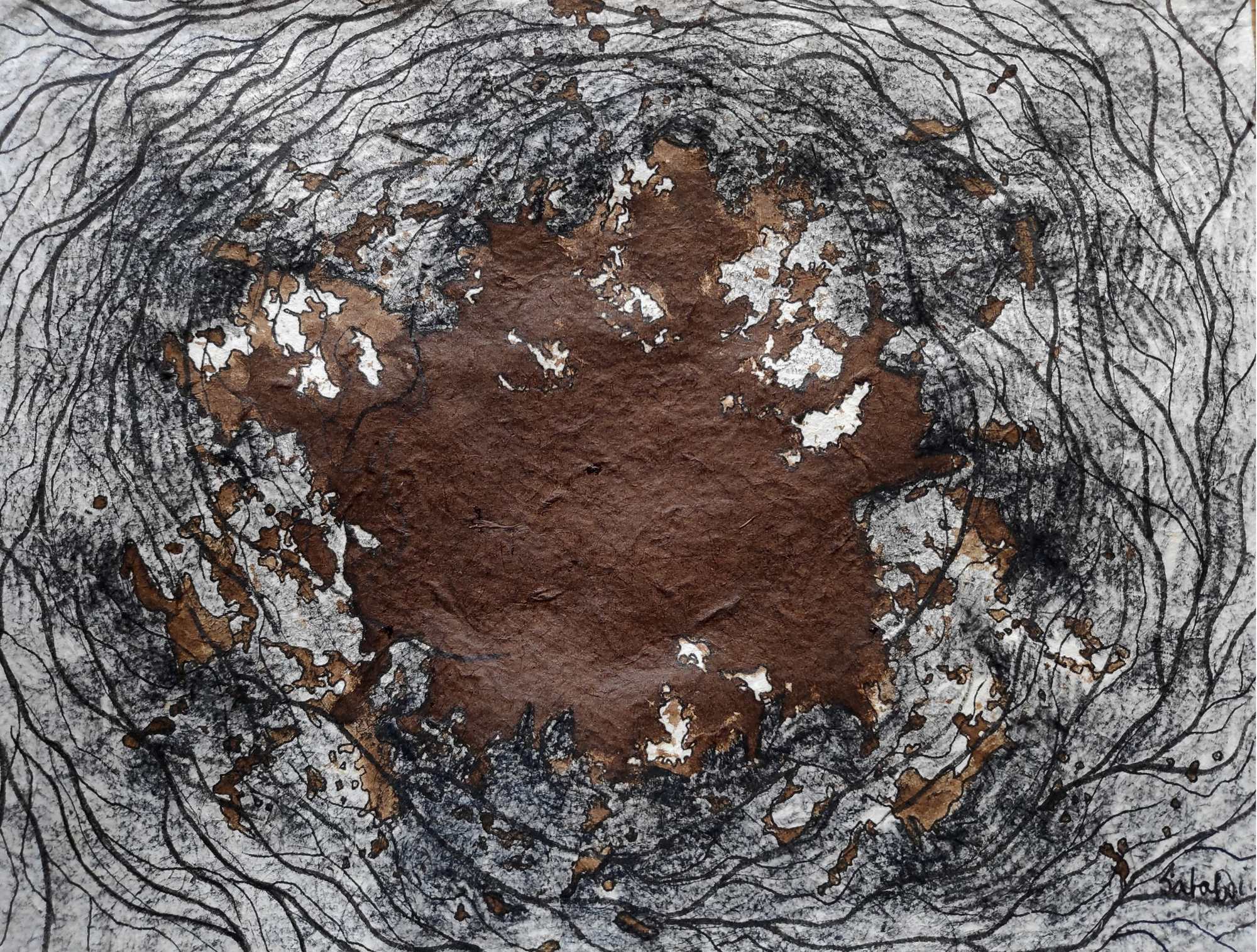#InConversation with Satabdi Hati
By Sanjana Srinivasan | Dec 19 2023 · 12 mins
Satabdi Hati is an abstract artist whose work expresses a spontaneous psychological connection with nature. She incorporates natural elements into her work and uses them as a model for developing images. Satabdi integrates unexplored movements of organic structures of trees, which creates the sensation of being in a forest—between the boundaries of a real and unreal world. Here, Sanjana speaks to Satabdi about her practice.
Sanjana - Your artwork is described as a reflection of your profound connection with nature, particularly during your relocation to France just before the COVID-19 pandemic. Could you share how this connection with nature has influenced your artistic journey and the themes in your work?
Satabdi - Ever since I can remember, I have had a strong connection with nature. I grew up surrounded by incredible ancient shaal trees, and they played a big part in nurturing my love for nature; it began to take root. Then, one of the most important chapters in my life unfolded when I headed to Santiniketan. This beautiful place taught me about living in harmony with nature, and I spent a fantastic eight years there. It has forged an unbreakable bond between nature and my existence. It has always been a huge influence on me. It is like this powerful force that left an indelible mark on my mind, my most treasured memories and the art I create. From my viewpoint, nature is the canvas for my creative journey.
Then, life took me to France, and a whole new phase of my life began; it was full of struggle and challenges. I found it really hard to express myself using a new language. The language became the roadblock to expressing my thoughts, and that’s when I turned to my memories for comfort, especially the ones from my childhood. Those memories kept coming back to me, and I started to picture the familiar landscape of my hometown and those majestic grand shaal trees that left a deep impression on me. That’s how nature slowly started to take over my art and it became a profound part of it.
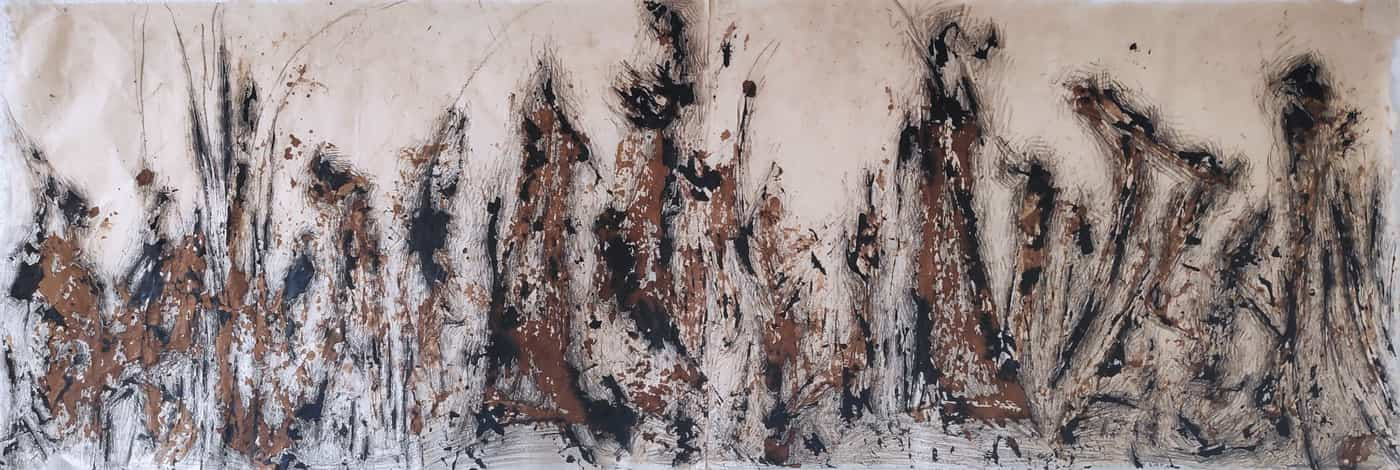

Forest Series - 22, 2022
Sanjana - The challenges you faced, such as language barriers and cultural differences, during your move to France are intriguing. How did these challenges impact your art and contribute to the evolution of your style and themes?
Satabdi - Over time, my artwork evolved as a response to various rejections, gradually deviating away from human figures. I believe that language is the most vital medium for conveying one’s thoughts. When I arrived in France, I found myself struggling with the inability to articulate my ideas and thoughts through words. Consequently, my expressions found shelter on paper, effectively reflecting my inner world through my artistic creations.
Amidst the backdrop of cultural differences, I took the ship on a quest to find a sanctuary where I could connect with a sense of belonging, perhaps even unknowingly. It was during this journey that the profound beauty of nature resonated with my soul, a transformation that occurred quite imperceptibly. Nature became my silent language through which I conveyed my feelings. In this process, I accidentally discovered that the human figures, once in the foreground of my artworks, had gradually dissolved, and nature, which was in the background, took their place. The figures of trees and plants emerged as if they were the living sculptures that truly spoke to me.
Sanjana - Your artistic journey began in Santiniketan, India, where you focused on graphics and woodcuts. Can you tell us about the transitions and adaptations you've made in your style as you navigated different phases of your life and career?
Satabdi - Santiniketan holds a special place in my heart, as it marked the beginning of my journey towards independence. It was my first taste of exploring diverse experiences simultaneously. As a new medium, I chose printmaking/ graphics. For me, it was all about learning new things and adapting new methods, exploring different challenges. There, I portrayed the relationship between nature and human beings and different stories of life through etching, woodcuts, lithographs, etc.
After my master's from Santiniketan, I faced the challenge of not having a dedicated studio for printmaking endeavours. Furthermore, after five years of intense focus on printmaking, I was longing to break that and explore new possibilities.
I began creating drawings with pen and ink, all the while holding the essence of etching in my thoughts. Gradually, I began to experiment with various mediums, including acrylics and ink, on both paper and canvases.
After relocating to France, I encountered various challenges in a new foreign land along with the outbreak of COVID-19. I firmly believe that everything occurs for a purpose. During the tough time of covid situation, I realized the importance of natural elements and the value of recycling different materials. Gradually, my artistic journey started evolving as time passed, I started working with natural materials and mediums such as charcoal and ink, natural handmade papers.
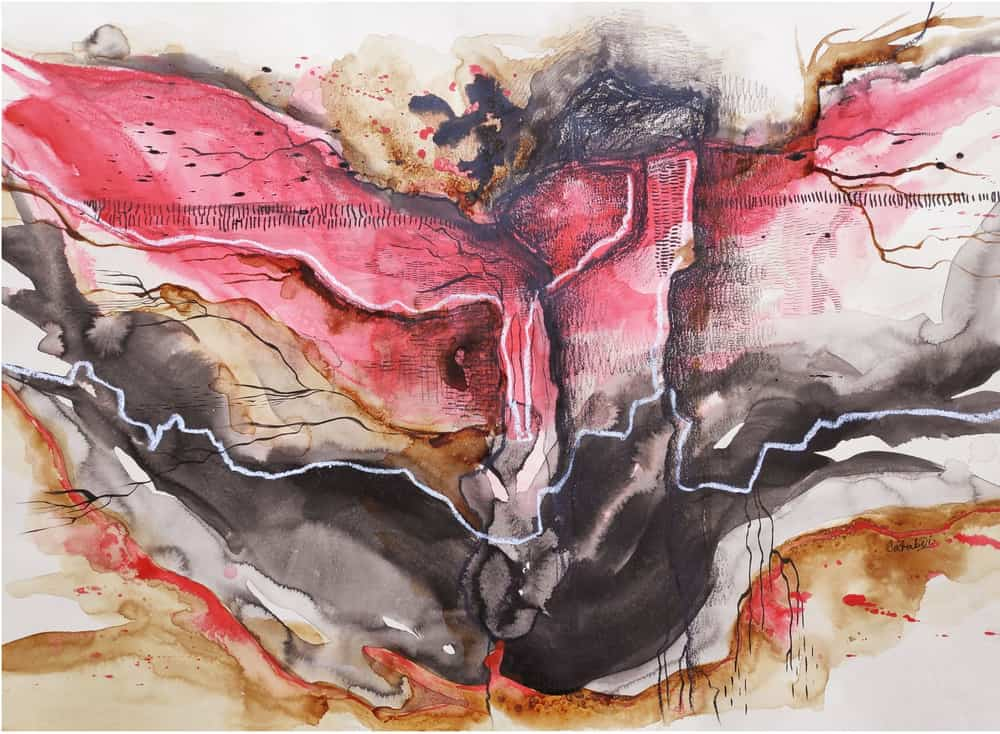

Khoai - Canyon Series - 2, 2021
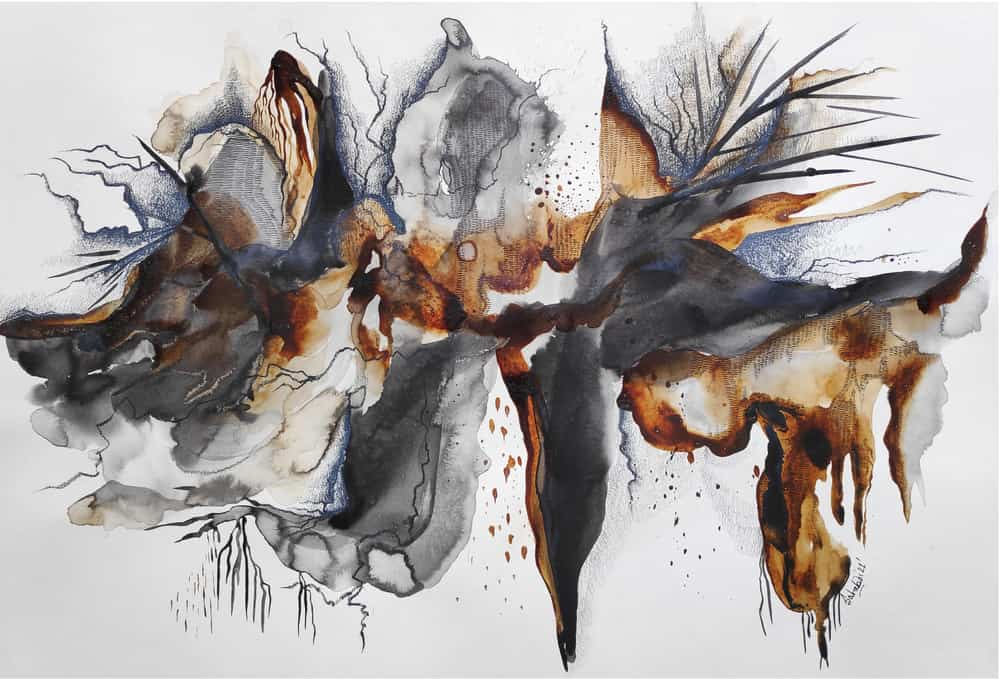

Khoai - Canyon Series - 5, 2021
Sanjana - The importance of natural light in your creative process is notable. How does working exclusively without artificial illumination affect your art, and why is it essential to your practice?
Satabdi - I always prefer working in natural light. It provides me with energy and a balanced intensity that artificial lighting often cannot replicate. It really affects my mood and perception. It also gives me a definite visual effect for my works as I work with some specific colour range. To me, the use of natural light serves as a bridge connecting me to the natural world. From the technical side, I also use very intricate details, which need to be done preferably in the daylight.
In addition to this, there is another medical reason that I have not previously disclosed to anyone. Over the years, the extensive focus on intricate details in my work, from etching to my current drawings, has taken a toll on my eyesight, leading to weak eyesight. Therefore, in the interest of my future well-being, it is strongly advised that I refrain from working at night or using artificial illumination.
Sanjana - You've shifted towards using organic materials like sticks, charcoal, and inks. How do these materials enhance your artistic expression and reinforce the connection between your art and the natural world?
Satabdi - Choosing organic materials is my conscious decision. There are many reasons; first of all, this makes a direct connection with nature. It gives me an inspiration to engage myself with natural objects. Secondly, I have experienced that these materials often have unique textures and tactile qualities that satisfy me a lot. For example, sticks, which I use, provide me with a variety of strokes and marks, which are unpredictable and surprises me every time. And also, I love the imperfection effect. It comes in a very organic way. I feel like it has its own beauty, which creates a sensation and brings depth to my work. Lastly, in a small manner, I try to focus on sustainability and environmental consciousness to encourage viewers to think about their relationship with nature.
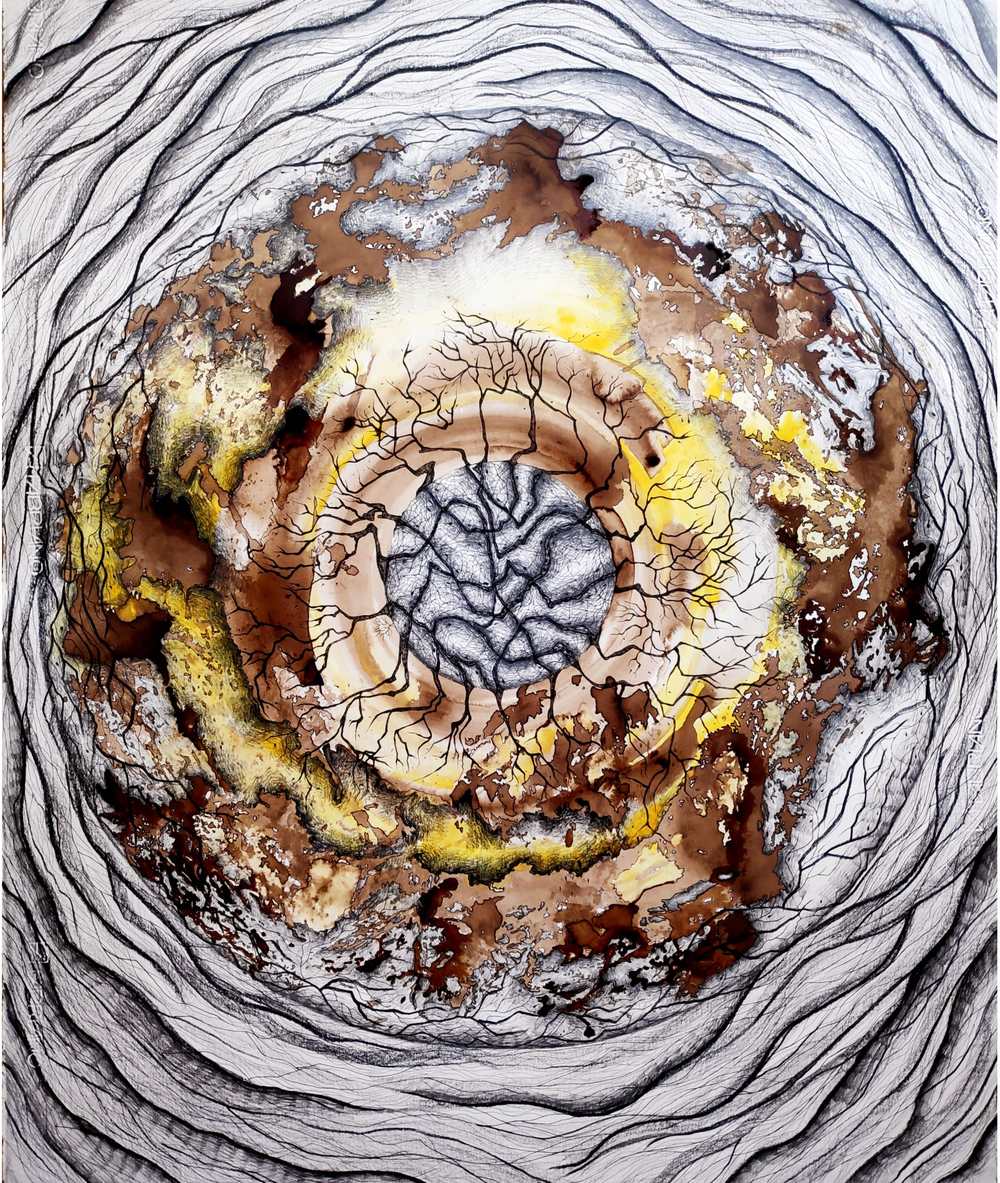

Forest Series - 11, 2022
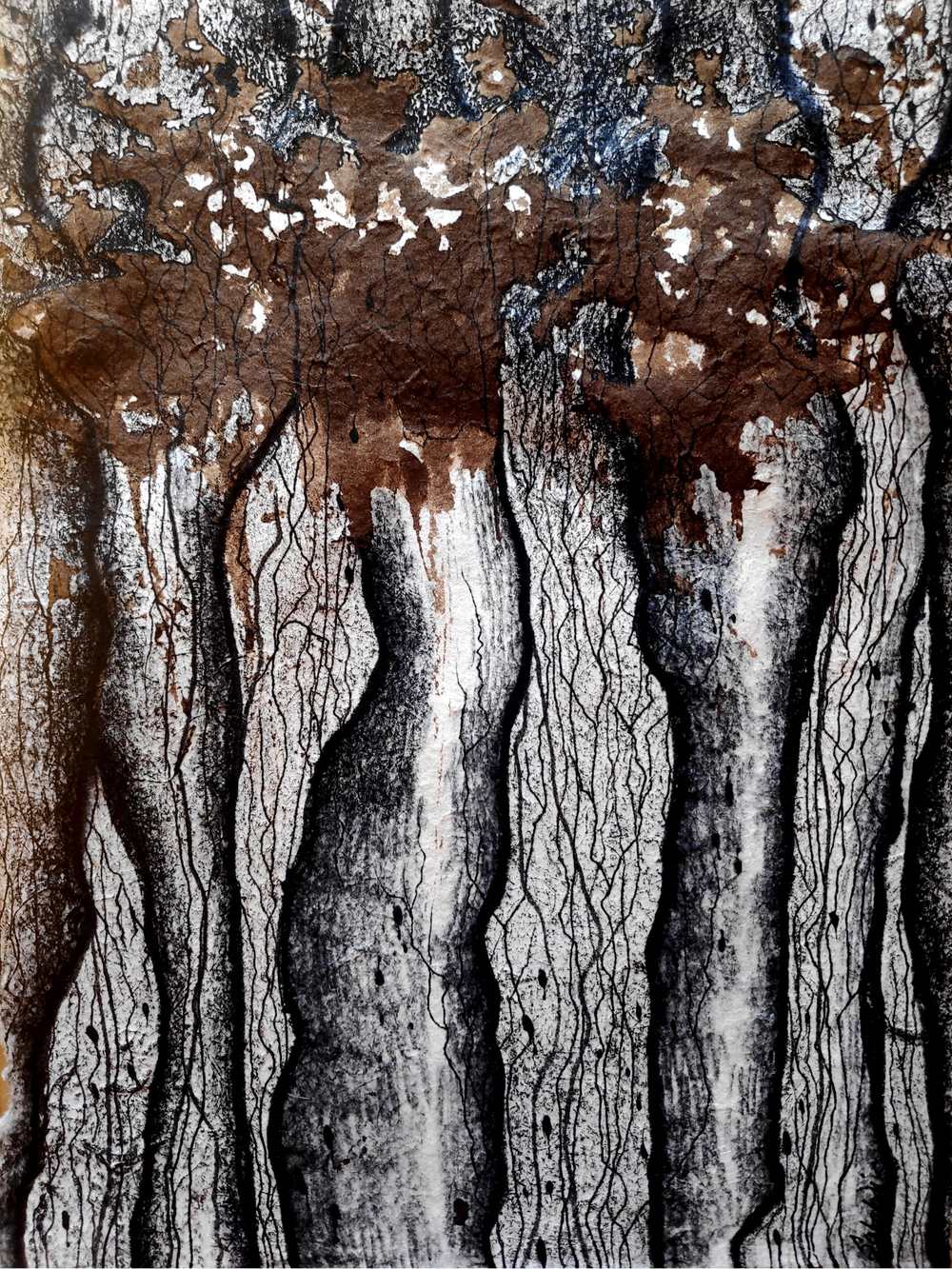

Forest Series - 17, 2022
Sanjana - Much of your work is described as intuitive, drawing inspiration from your memories of nature, places, and emotions. Could you take us through your creative process and how these elements come together in your art?
Satabdi - As an artist, my life and work are intertwined, constantly moving and changing, both physically and emotionally. The thought of this unstable life haunts me, but at the same time, it gives me an unknown strength and the impulse to create. However, with every relocation comes the feeling of isolation and the sense of not belonging due to the language barrier, which cannot be put into words. These emotions are reflected in my artwork as I try to convey the complexity of my emotional state and the sense of loss and disconnection from my roots. In my search for a connection with my homeland, nature inspires me the most.
I try to capture my psychological connection with nature by incorporating natural elements and using them as a model for my images. To me, each element of nature is like an individual sculpture. They are all unique and beautiful in their own way. It is an exploration of the relationship between growing old and the stories of standing beside each other, where I amalgamate the undiscovered poetic side of my works.
The movements of organic structures of trees are integrated to create the sensation of being in a forest, blurring the lines between the real and unreal. My artwork also includes areas of black, symbolizing depth, complexity and sadness. Viewers are invited to travel through nature’s different forms and lines through my creations.
Sanjana - Are there specific memories or experiences from your time in France that have had a significant impact on your artwork? Can you share a particular piece that encapsulates this influence?
Satabdi - Of course, my stay in France has had a great impact towards my work. I have been fortunate to experience an incredible diversity of exhibitions, unlike anything I have ever encountered before,
which I have seen during my stay in Europe. I am fortunate to perceive the most number of exhibitions of different artists from a variety of fields and different genres of every time period.
This exposure helped me to reevaluate myself and to rethink my thoughts and process of my artistic approach. It's challenging to pinpoint a specific piece as it is a continuous process of self-enrichment that has evolved with the time period.
Sanjana - How has the uncertainty and confinement imposed by the COVID-19 pandemic affected your creative process and the themes you explore in your art?
Satabdi - My arrival in France, just before the outbreak of the COVID-19 pandemic, marked the beginning of a challenging journey. As a newcomer to a foreign land with an unfamiliar language, I faced numerous challenges. Moving with four suitcases made it difficult for me to carry my art materials. Thus, after securing a place to live, I was about to start the process of collecting materials to create my artwork. Unfortunately, the pandemic was in full swing, and all the shops were closed, leaving me without access to the necessary supplies.
Despite the setback, I remained determined to continue creating with my minimum supplies. It was during this time that I turned to the resources readily available to me, and my experimentation with coffee as a medium began. The long months of confinement provided me with an opportunity to reflect on my life and my art, ultimately leading to the development of a new series of paintings titled “Finding Roots.”
I had the privilege of presenting this series of works in my solo exhibition at Galerie du Tableau, in 2021. The experience has taught me that even in challenging times, we can still find inspiration and beauty in the unexpected.
Sanjana - Looking ahead, what direction do you see your artistic journey taking, and are there new themes or techniques you plan to explore in your future work? Also, whose art are you inspired by?
Satabdi - I see this artistic journey as a long adventure, being I am an optimistic person, I am eager to explore to the fullest. There is so much waiting to be discovered, and I have a bucket list to guide me. It includes creating large installations, blending my techniques with photography, crafting expansive collage works, and even participating in paper-making workshops. The list is long and I am looking forward to what lies ahead.
I am drawn to the work of Benode Behari Mukherjee, Nandalal Bose, Ramkinkar Baij and Sanat Kar from Santiniketan, whose art beautifully captures the essence of nature and landscapes.
From the Western art scene, I was mesmerized to discover Van Gogh’s work. The usage of colours directly touches my soul. I love to see the playful journey through the work of Matisse. The huge Water Lilies by Claude Monet and his words inspire me a lot: “The richness I achieve comes from nature, the source of my inspiration”.
In a contemporary scenario, my favourite artists are Phyllida Barlow, David Hockney, Yayoi Kusama, Miriam Cahn, Ghada Amer, Anselm Kiefer. The world of art is filled with endless inspiration, and I am excited to explore it further.
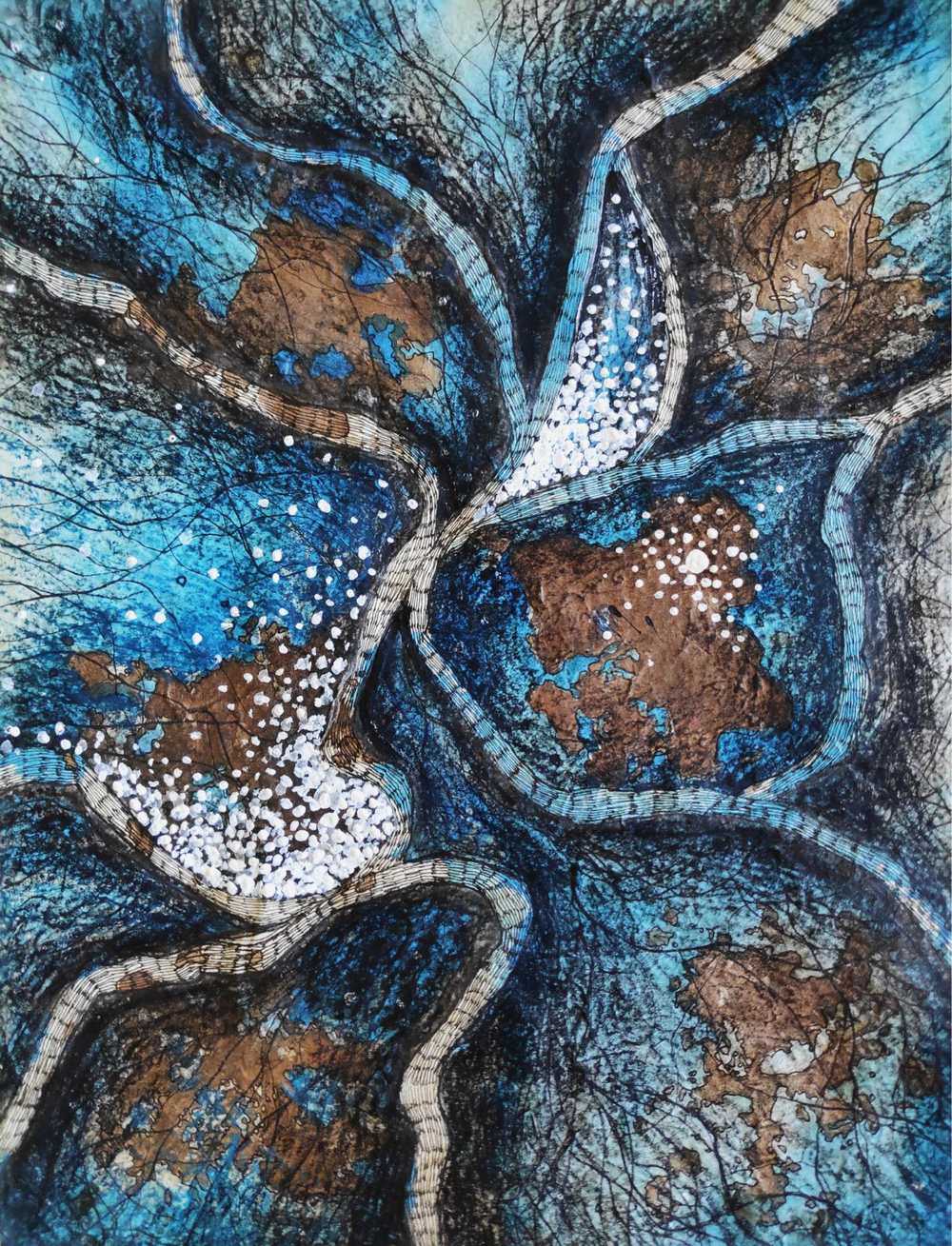

Forest Series - 21, 2022
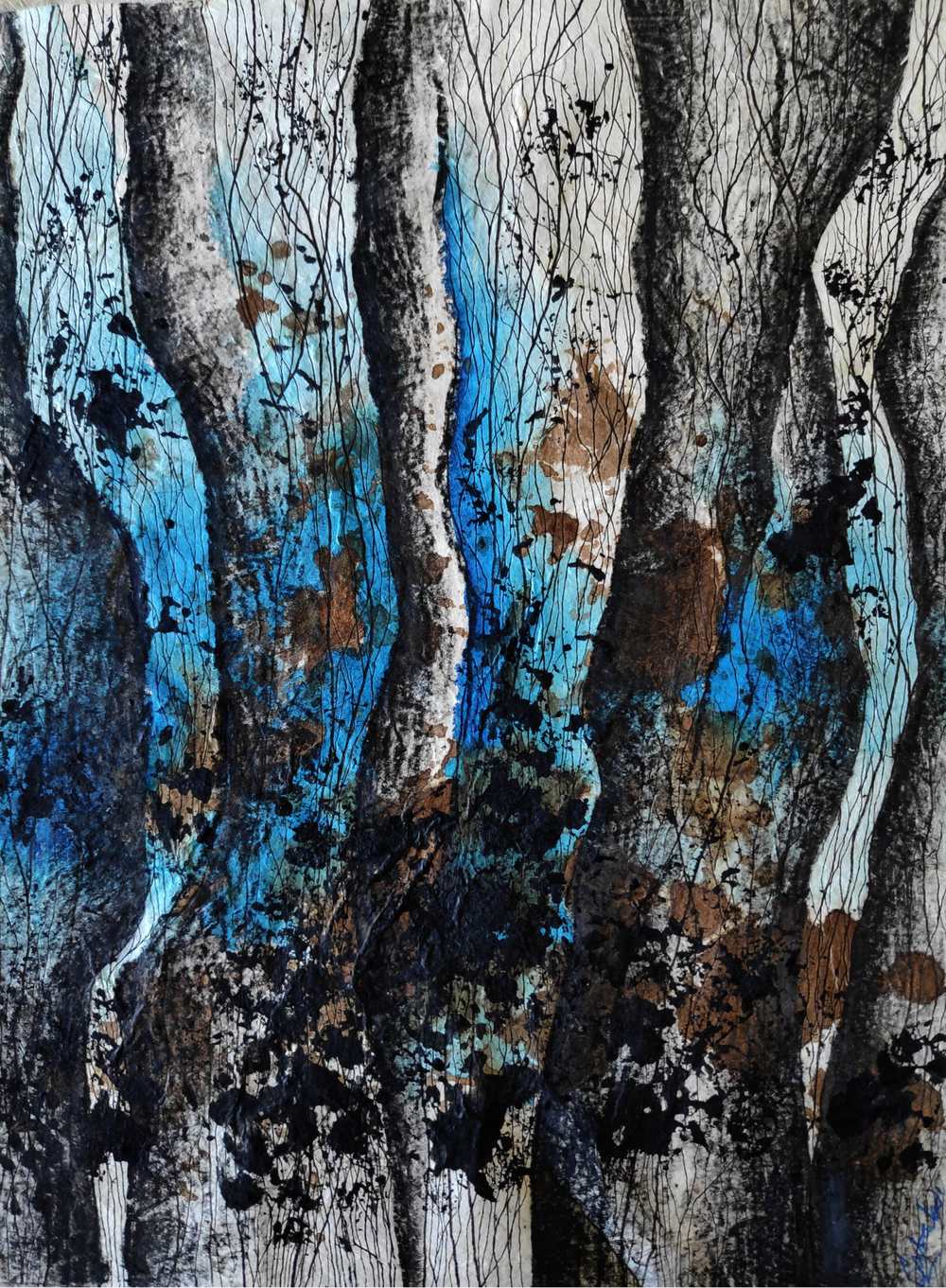

Forest Series - 18, 2022
Sanjana - Lastly, tell me more about the papers you use.
Click here to view Satabdi's Online Viewing Room and learn more about her practice.
Satabdi - I prefer working with natural handmade papers like Nepali paper because it is remarkably close to nature. It is made from the fibers of Lokta bush, which is eco-friendly and sustainable. I especially chose this medium carefully because Lokta bushes don’t require deforestation, as they regenerate quickly. On one side, it helps to protect the fragile ecosystem, and on the other side, it creates opportunities for the continuation of traditional, environment-friendly paper-making practices.
I have been using this paper for the last two years, the texture and natural colour have a distinct organic quality. I try to send a message to the viewers about today's vulnerable situation in our natural world. The earthy colour of this paper has a powerful symbol that represents the fragility and beauty of the natural world in today’s day.

